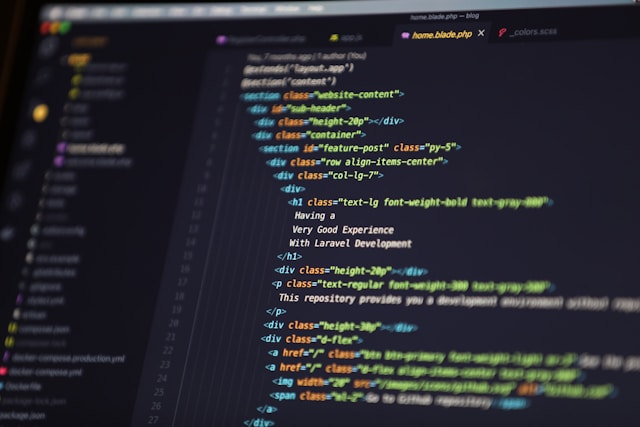In the realm of social media tools, a dedicated Facebook Scraper aims to give users and developers the ability to extract publicly visible content from Facebook pages, posts, videos, and metadata. Apidownloader’s “Facebook Scraper” product (as shown at /products/facebook-scraper) is one such offering. This article breaks down what such a scraper typically offers, how it works, its use cases, and what to watch out for when using it.
What Is the Facebook Scraper by Apidownloader?
The “Facebook Scraper” product of Apidownloader is a specialized module or API endpoint that lets you download or extract media and metadata from Facebook content — posts, images, videos, and related fields — programmatically or via a web interface. Rather than being a generic scraper, it’s tailored to Facebook’s content structure, ensuring better accuracy and compatibility with Facebook’s layout and media hosting conventions.
This kind of product usually combines multiple backend components (parsing engine, proxy network, media fetching) to deliver usable output (e.g. JSON, direct media URLs, thumbnails).
Core Features & Capabilities
Here are the features you would expect (and likely that Apidownloader’s Facebook Scraper includes) for a robust Facebook scraping module:
Feature Description
Public Content Download Extract media (images, videos) from public posts or pages.
Metadata Extraction Titles, captions, timestamps, reactions count, comment count, share counts, author/page info.
Media URL Resolution Return direct URLs to high-resolution video/image files hosted by Facebook.
Thumbnail & Previews Provide thumbnail images or default previews.
Multiple Format Support Support output in JSON, CSV, or direct downloading of media (MP4, JPG).
Pagination / Scroll Fetching Ability to scroll through older posts, “Load more” logic, retrieve content across pages.
Error Handling & Retries If a request fails (network, block, timeout), retry or fallback.
Proxy / IP Rotation To reduce blocking or throttling risks, use rotating proxies behind the scenes.
Rate Limiting Restrict how fast requests are sent to avoid triggering detection.
Developer API & Integrations Endpoints so developers can call the scraper from apps or scripts.
Scheduling / Automation Ability to run periodic scrapes (daily, hourly) or schedule jobs.
A good Facebook Scraper product will mask much of the complexity — users only need to supply the post or page URL and receive structured data in return.
Example Workflow & Output
Here’s how a typical use of this Facebook Scraper would go:
You supply a public Facebook page or post URL to the scraper (via web UI or API).
The scraper resolves that URL, fetches the HTML or associated media endpoints, parses the structure.
It extracts relevant data: caption, author page name, timestamp, reactions, comments count, share count, media URLs.
Use Cases & Who Benefits
Social Media Analysis
You can track the performance of posts (engagement, reach via reactions) over time.
Competitive Intelligence
Monitor what content competitors post, how often, and what media they use (videos, images).
Content Archiving
Save important videos or posts before they are removed, cleaned by the owner, or lost.
Research / Media Monitoring
Journalists, academics, or analysts might want to archive or analyze public posts as part of studies.
Campaign Audits
Agencies can pull published posts and creatives to compare campaigns across clients or over time.
Challenges & Limitations
When using a Facebook Scraper product (or building your own), several limitations naturally arise:
Access Restrictions
Only publicly visible content can be scraped. Private profiles, closed groups, or content restricted by Facebook’s privacy settings are not accessible.
Rate Limits & Blocking
Facebook may throttle or block requests if too many are sent from the same IP or pattern. Good scrapers include proxy rotation and request pacing.
Layout Changes / DOM Variability
Facebook frequently changes its HTML structure, CSS classes, or how media is embedded. Scrapers must adapt or update their parsing logic.
Media Protection / Encoding
Some videos or images might be obfuscated, segmented, or delivered via dynamic streaming protocols, making direct media URL extraction non-trivial.
Incomplete Data
Some posts may have comments hidden, restricted visibility, or truncated previews, so scraped data might miss details.
Legal & Terms-of-Service
Scraping Facebook automatically may violate Facebook’s Terms of Service. Users must ensure they scrape only legal, public content, and avoid redistribution of copyrighted materials without permission.
Best Practices for Using a Facebook Scraper
Use proxy rotation to reduce detection risk.
Respect rate limits; add delays between requests.
Monitor for HTTP 429, 403, or block responses and back off.
Version your extraction logic so you can update parsers quickly when Facebook changes layouts.
Cache media or post IDs to avoid redundant scraping.
Use pagination logic to scroll through multiple posts properly.
Log errors and failed URLs for manual review.
Comparison with Facebook Graph API
The official Facebook Graph API allows access to certain public page data, but is limited by permissions, rate quotas, and cannot retrieve certain media or post content outside of the API’s permitted scope.
A dedicated scraper often covers edge cases or content not exposed by the API (e.g. certain media URLs, embedded posts).
However, the Graph API is more stable and sanctioned; scraper products risk disruptions, maintenance overhead, and legal scrutiny.
How Apidownloader’s Facebook Scraper Fits In
If Apidownloader offers a Facebook Scraper at /products/facebook-scraper, it likely bundles all the complexities (proxies, parsing, media extraction) into a user-friendly product. Users input a URL or a Facebook page, and Apidownloader handles the rest — returning media files or structured metadata.
Because it’s productized, you don’t need to build or maintain your own scraper. You also benefit from shared infrastructure (proxy pools, error recovery, updates). The key is to confirm in the product docs exactly which features are supported (comments, pagination, media formats) and any usage limits or costs.
